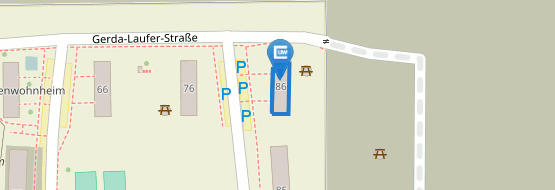Dr. Maninder Singh Dhillon

Lehrstuhl für Fernerkundung
![]() +49 (0)931 31-81890
+49 (0)931 31-81890
maninder.dhillon@uni-wuerzburg.de
Institut für Geographie und Geologie
Lehrstuhl für Fernerkundung
John Skilton Str. 4a
97074 Würzburg
nach Vereinbarung
- Landwirtschaftliche Fernerkundung
- Modellierung von Ernteerträgen
- Vielfalt der Landnutzung
- Biodiversität
- Nachhaltige Landwirtschaft
- Präzisionslandwirtschaft
Seit 03/2024
Postdoc am Lehrstuhl für Fernerkundung der Universität Würzburg / Leitung des Arbeitspaketes „Biodiversität“ an der JMU im Projekt EO4CAM
04/2023 - 02/2024
Wissenschaftlicher Mitarbeiter am Lehrstuhl für Fernerkundung, Universität Würzburg
03/2019 - 03/2023
Doktorand am Lehrstuhl für Fernerkundung, Universität Würzburg
Thema: „Potenziale der Fernerkundung bei der Modellierung langfristiger Ernteerträge“
07/2018- 02/2019
Wissenschaftliche Hilfskraft am Lehrstuhl für Fernerkundung, Universität Würzburg
02/2018 - 04/2018
Praktikant, Deutsches Zentrum für Luft- und Raumfahrt (DLR), Neustrelitz, Deutschland
09/2016 - 02/2019
Studium der Erdbeobachtung und Geoanalytik „EAGLE“ (M.Sc.), Universität Würzburg
Masterarbeit: „Vergleich der Leistungsfähigkeit von Pflanzenwachstumsmodellen unter Verwendung synthetischer Fernerkundungsdaten bei DEMMIN, Deutschland“
12/2015- 09/2016
Wissenschaftliche Hilfskraft am Punjab Remote Sensing Center (PRSC), Ludhiana, Indien
-
. (2025): Landscape structure, climate variability, and soil quality shape crop biomass patterns in agricultural ecosystems of Bavaria.
-
. (2024): Harmonized NDVI time-series from Landsat and Sentinel-2 reveal phenological patterns of diverse, small-scale cropping systems in East Africa. In: Remote Sensing Applications: Society and Environment, 35, 101230.
-
. (2023): Impact of {STARFM} on Crop Yield Predictions: Fusing {MODIS} with Landsat 5, 7, and 8 {NDVIs} in Bavaria Germany. In: Remote Sensing, 15 (6), 1651.
-
. (2023): Integrating random forest and crop modeling improves the crop yield prediction of winter wheat and oil seed rape. In: Frontiers in Remote Sensing, 3
-
. (2023): Evaluation of MODIS, Landsat 8 and Sentinel-2 data for accurate crop yield predictions: A case study using STARFM NDVI in Bavaria, Germany. In: Remote Sensing7, 15, 1830.
-
. (2022): Modelling the Relative Abundance of Roe Deer (Capreolus capreolus L.) along a Climate and Land-Use Gradient. In: Animals, 12 (3)
-
. (2022): Spatiotemporal fusion modelling using STARFM: Examples of Landsat 8 and Sentinel-2 NDVI in Bavaria. In: Remote Sensing3, 14, 677.
-
. (2022): Disentangling effects of climate and land use on biodiversity and ecosystem services—A multi‐scale experimental design. In: Methods in Ecology and Evolution2, 13, 514-27.
-
. (2021): Feldmessgeräte: 1. AgriSens FELDTAG „Einsatz von Fernerkundungstechnologien in der Landwirtschaft“
-
. (2021): Groundwater irrigation and energy nexus in central Punjab-trends and analysis. In: Journal of Agricultural Development and Policy2, 31, 222-27.
-
. (2020): Modelling Crop Biomass from Synthetic Remote Sensing Time Series: Example for the DEMMIN Test Site, Germany. In: Remote Sensing, 12 (11), 1819.
-
. (2019): Comparing the performance of crop growth models using synthetic remote sensing data at DEMMIN, Germany
-
. (2019): Delineation of critical regions for mitigation of carbon emissions due to groundwater pumping in central Punjab. In: Groundwater for Sustainable Development, 8, 302-8.
-
. (2018): Light Use Efficiency Model to Estimate Biomass and YIELD With and Without Vapour Pressure Deficit
-
. (2018): Estimation of carbon emissions from groundwater pumping in central Punjabed. by Carbon Management. In: Carbon Management, 9 (4), 425-35.



